-
ORIGINAL ARTICLE09-24-2022
Spatial analysis of AIDS in the state of Maranhão: an ecological study 2011-2018
Revista Brasileira de Enfermagem. 2022;75(1):e20210131
Abstract
ORIGINAL ARTICLESpatial analysis of AIDS in the state of Maranhão: an ecological study 2011-2018
Revista Brasileira de Enfermagem. 2022;75(1):e20210131
DOI 10.1590/0034-7167-2021-0131
Views0See moreABSTRACT
Objective:
Analyze the spatio-temporal distribution of AIDS cases in Maranhão.
Methods:
Ecological study of AIDS cases in the Notifiable Diseases Information System, 2011-2018. Gross and adjusted incidences were calculated using the Baysean method; then, the Moran Global and Local Indices to observe the existence of spatial autocorrelation of the cases and for the delimitation of high and low risk clusters.
Results:
6,349 cases were reported, which were distributed heterogeneously. There was an advance of cases to new areas and persistence in old areas, such as in the capital São Luís and its surroundings. The dissemination did not occur at random, with positive spatial autocorrelation, with evidence of the formation of clusters in the municipalities of São Luís, São José de Ribamar and Paço do Lumiar.
Conclusion:
High-risk areas have been identified and should be considered a priority for investment in health, management, and organization of health services.

-
TECHNOLOGICAL INNOVATION09-24-2022
Transitional care from the hospital to the home in heart failure: implementation of best practices
Revista Brasileira de Enfermagem. 2022;75(1):e20210123
Abstract
TECHNOLOGICAL INNOVATIONTransitional care from the hospital to the home in heart failure: implementation of best practices
Revista Brasileira de Enfermagem. 2022;75(1):e20210123
DOI 10.1590/0034-7167-2021-0123
Views0See moreABSTRACT
Objectives:
Assess the compliance of the implementation of better evidence in the transitional care of the person with heart failure from the hospital to the home.
Methods:
Evidence implementation project according to the JBI methodology in a cardiology hospital in São Paulo. Six criteria were audited before and after implementing strategies to increase compliance with best practices. 14 nurses and 22 patients participated in the audits.
Results:
In the baseline audit, compliance was null with five of the six criteria. Strategies: training of nurses; reformulation of the hospital discharge form and guidance on self-care in care contexts; and making telephone contact on the 7th, 14th and 21st days after discharge. In the follow-up audit, there was 100% compliance with five of the six criteria.
Conclusion:
The project made it possible to increase the compliance of transitional care practices in people with heart failure with the recommendations based on the best evidence.

-
ORIGINAL ARTICLE09-24-2022
Characterization of obstetric care developed in teaching hospitals in a capital of northeast Brazil
Revista Brasileira de Enfermagem. 2022;75(1):e20200896
Abstract
ORIGINAL ARTICLECharacterization of obstetric care developed in teaching hospitals in a capital of northeast Brazil
Revista Brasileira de Enfermagem. 2022;75(1):e20200896
DOI 10.1590/0034-7167-2020-0896
Views0See moreABSTRACT
Objective:
to describe the obstetric care developed in teaching hospitals (TH) in the city of Maceió-AL, intended for high-risk pregnancies.
Methods:
Retrospective cohort study performed between June and November 2018 with 291 women who received assistance with vaginal delivery, cesarean section, or abortion process in teaching hospitals selected as settings for this research. Data collection allowed the characterization of the interviewees as well as the assistance received and its relationship with obstetric violence. The analysis was performed using descriptive and analytical statistics with the aid of the Epi Info software (version 7.2.0.1) and measures that allowed the comparison of means and proportions.
Results:
All women reported at least one violent situation, contrary to recommendations based on scientific evidence.
Conclusion:
It becomes necessary to optimize professional training to deconstruct obstetric care based on medicalization and pathologization of pregnancy and strengthen science-based care.
-
ORIGINAL ARTICLE09-24-2022
Risk classification in a pediatric service: evaluation of the structure, process, and outcome
Revista Brasileira de Enfermagem. 2022;75(1):e20210022
Abstract
ORIGINAL ARTICLERisk classification in a pediatric service: evaluation of the structure, process, and outcome
Revista Brasileira de Enfermagem. 2022;75(1):e20210022
DOI 10.1590/0034-7167-2021-0022
Views0See moreABSTRACT
Objectives:
to evaluate a pediatric risk evaluation and classification service in the aspects of structure, process, and outcome.
Methods:
a cross-sectional, descriptive, and exploratory study in which qualitative data complement the results. Data collection by non-participant observation, interview, and consultation of medical records.
Results:
we observed two hundred and four visits. The service works in a makeshift room and without privacy. The nurses did not use various materials/equipment available for evaluation, rarely performed a physical examination, used the interview most of the time, and did not consult the protocol. Parents/companions received no information, and medical records showed incomplete records. Nurses classified 69.1% of the children as non-emergency. The most frequent outcome of the visits was discharge.
Conclusions:
the service showed weaknesses in the physical structure, in the risk classification process, and the outcomes, but it presents a good resolution in the assistance. We recommend a revision in the protocol used and sensitize nurses about the work process and communication with parents/companions.
-
ORIGINAL ARTICLE09-23-2022
Peripherally inserted central catheter obstruction in packed red blood cell transfusions in neonates
Revista Brasileira de Enfermagem. 2022;75(4):e20210967
Abstract
ORIGINAL ARTICLEPeripherally inserted central catheter obstruction in packed red blood cell transfusions in neonates
Revista Brasileira de Enfermagem. 2022;75(4):e20210967
DOI 10.1590/0034-7167-2021-0967
Views0See moreABSTRACT
Objectives:
to estimate incidence and free time of peripherally inserted central catheter obstruction in newborns undergoing red blood cell transfusion in the first 24 hours after the procedure.
Methods:
a longitudinal study, carried out with neonates in Neonatal Intensive Care Unit at a teaching hospital in Paraná, between January and July 2019. The sample consisted of 46 transfusion events performed in neonates through a peripherally inserted central catheter. Analysis performed according to descriptive statistics.
Results:
thirty-one catheters were analyzed, inserted in 24 neonates, through which 46 red blood cell transfusions were performed. Most neonates were male, gestational age <32 weeks, weight <1,500 grams, hospitalized mainly for prematurity. Among the 31 catheters, one (3.2%) presented obstruction after transfusion.
Conclusions:
The occurrence of obstructions immediately after transfusion was low and the catheters remained complication free for the next 24 hours.
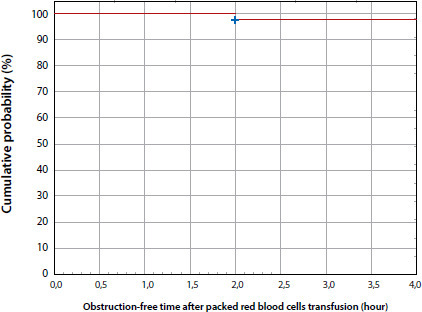
-
ORIGINAL ARTICLE09-23-2022
Validation of the Informal Caregiver Burden Assessment Questionnaire for Brazil – short version
Revista Brasileira de Enfermagem. 2022;75(4):e20210862
Abstract
ORIGINAL ARTICLEValidation of the Informal Caregiver Burden Assessment Questionnaire for Brazil – short version
Revista Brasileira de Enfermagem. 2022;75(4):e20210862
DOI 10.1590/0034-7167-2021-0862
Views0See moreABSTRACT
Objectives:
to cross-culturally adapt the short version of the Informal Caregiver Burden Assessment Questionnaire to the Brazilian culture and test its psychometric properties.
Methods:
the questionnaire was translated, adapted, and applied to a sample of 280 informal caregivers. The psychometric assessment was verified by estimating psychometric sensitivity and internal structure validity.
Results:
inter-rater agreement was satisfactory among specialists. In the seven-factor model, item (Q9) of the domain “Perception of Efficacy and Control Mechanisms” showed a factor loading less than 0.40 (ʎ = 0.26), and an alternative six-factor model was evaluated. However, both models showed excellent fit indices, and it was decided to keep the seven-factor reference model. Reliability was satisfactory for the seven subscales (α > 0.70).
Conclusions:
the questionnaire was adapted and showed adequate psychometric indices in the Brazilian context in which it was evaluated, preserving its original essence.
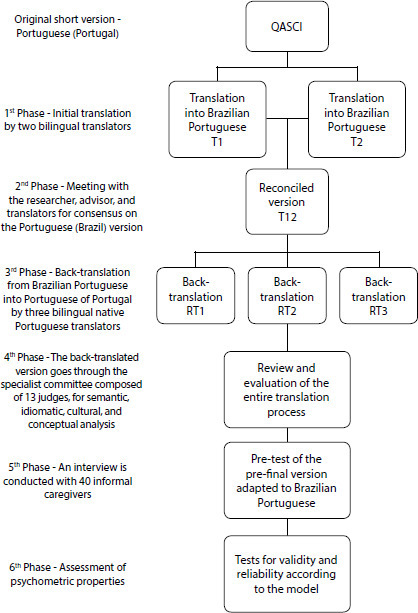
-
ORIGINAL ARTICLE09-23-2022
Analysis of the concept of cardiovascular risk: contributions to nursing practice
Revista Brasileira de Enfermagem. 2022;75(4):e20210803
Abstract
ORIGINAL ARTICLEAnalysis of the concept of cardiovascular risk: contributions to nursing practice
Revista Brasileira de Enfermagem. 2022;75(4):e20210803
DOI 10.1590/0034-7167-2021-0803
Views0See moreABSTRACT
Objectives:
to analyze the concept of cardiovascular risk to support nursing practice.
Methods:
this is an analysis to define the concept of cardiovascular risk, through the use of eight steps of Walker’s and Avant’s framework, using a literature review in indexed scientific journals.
Results:
cardiovascular risk is defined in a broad and original way as a context of health and nursing care that makes it possible to identify modifiable (cardiometabolic, behavioral, psychosocial, cultural and occupational) and non-modifiable (biological) risk factors for cardiovascular diseases that act as early and interrelated markers, of multiple and heterogeneous etiology, predisposing to cardiovascular vulnerability.
Conclusions:
with the analysis and definition of the concept of cardiovascular risk, we realized that it will be possible to base nursing practice, with implications in clinical practice for identifying and reducing risk factors for cardiovascular diseases, with nursing relevance in the care of these subjects.
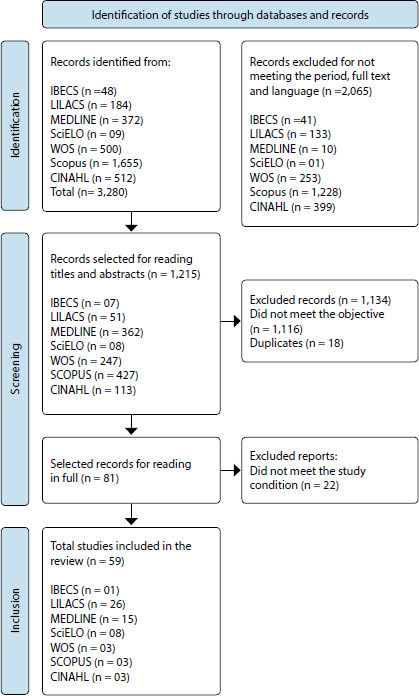
-
ORIGINAL ARTICLE09-23-2022
Brain death communication with parents of children and adolescents: care strategies
Revista Brasileira de Enfermagem. 2022;75(3):e20210943
Abstract
ORIGINAL ARTICLEBrain death communication with parents of children and adolescents: care strategies
Revista Brasileira de Enfermagem. 2022;75(3):e20210943
DOI 10.1590/0034-7167-2021-0943
Views0See moreABSTRACT
Objectives:
to identify care strategies developed by professionals from critically ill patients’ units in communicating BD with parents of children and adolescents.
Methods:
an exploratory and descriptive research with a qualitative approach, carried out in two health institutions between October and December 2019, through semi-structured interviews. Data analysis took place through content analysis.
Results:
twenty-one professionals participated. Three care strategies were identified: actual clinical situation in suspected brain death; sensitizing families to the real clinical situation after brain death diagnosis; and time to assimilate the death information.
Final Considerations:
the care strategies for communicating brain death to families identified in this study present the possibility of subsidizing health managers in training and support promotion for professionals in care practice. Moreover, they can be incorporated and validated in the care practice of the studied context.
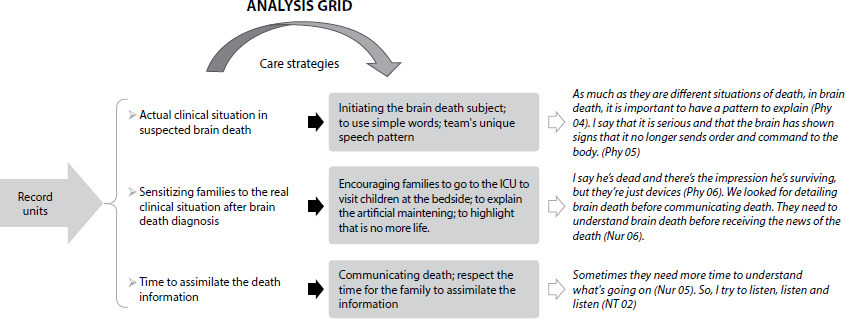
-
ORIGINAL ARTICLE08-19-2019
Mobile application for the teaching of the International Classification for Nursing Practice
Revista Brasileira de Enfermagem. 2019;72(4):1020-1027
Abstract
ORIGINAL ARTICLEMobile application for the teaching of the International Classification for Nursing Practice
Revista Brasileira de Enfermagem. 2019;72(4):1020-1027
DOI 10.1590/0034-7167-2018-0751
Views0See moreABSTRACT
Objective:
Developing a mobile application for the teaching of the International Classification for Nursing Practice.
Methods:
Methodological applied research for technological production, performed in three phases of the contextualized instructional design model: analysis, design and development.
Results:
The application has an initial screen, which provides information about the team and its purpose. Then, four moblets are listed, including presentation, user’s guide consisting of five modules, educational games and five clinical cases. The references on which the application was based are also presented.
Final considerations:
It was possible to develop an application with the potential to promote the knowledge of nursing students and professionals about this classification system.
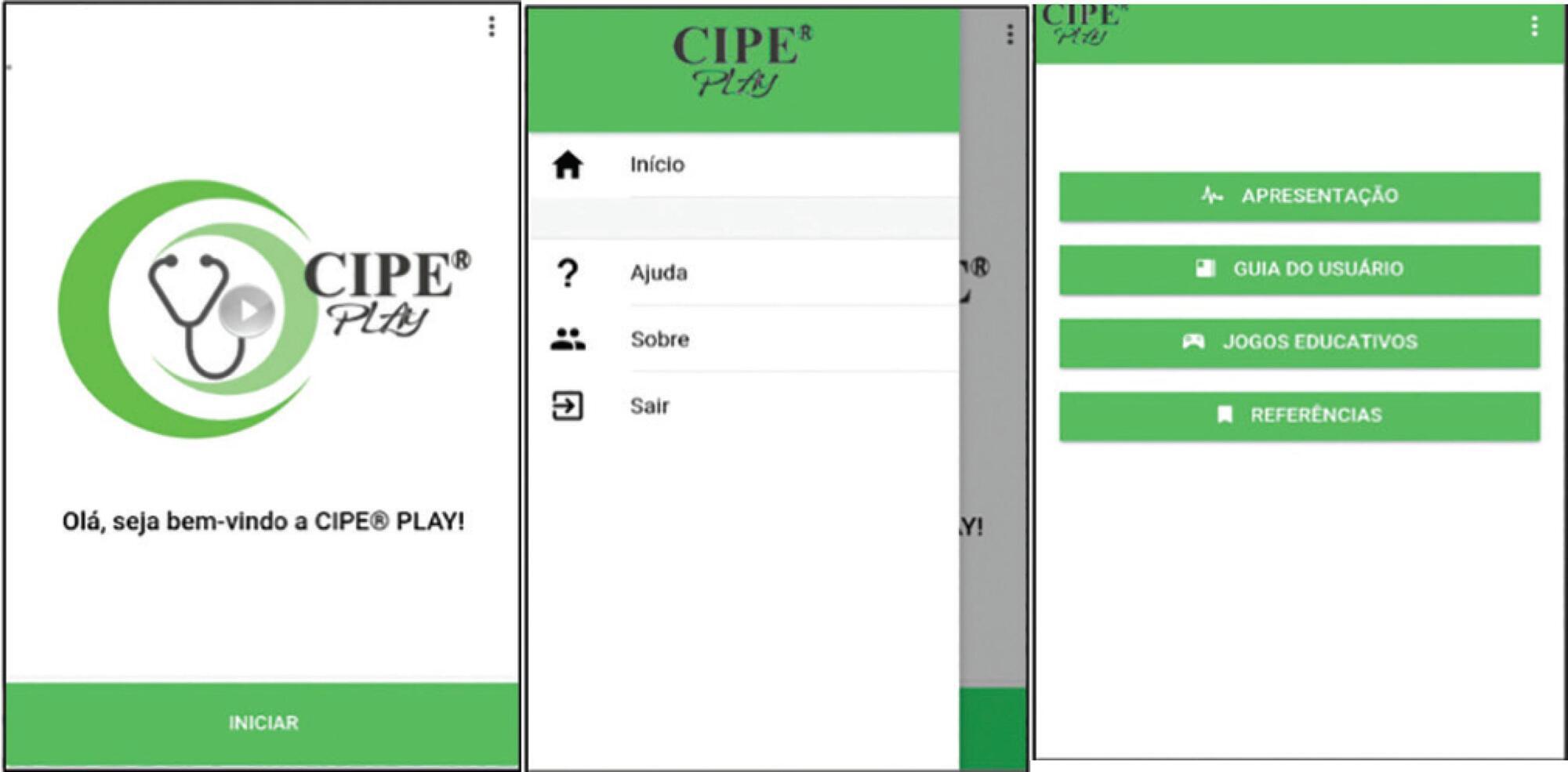
-
ORIGINAL ARTICLE08-14-2020
Education to prevent ventilator-associated pneumonia in intensive care unit
Revista Brasileira de Enfermagem. 2020;73(6):e20190477
Abstract
ORIGINAL ARTICLEEducation to prevent ventilator-associated pneumonia in intensive care unit
Revista Brasileira de Enfermagem. 2020;73(6):e20190477
DOI 10.1590/0034-7167-2019-0477
Views0INTRODUCTIONVentilator-Associated Pneumonia (VAP) is one of the complications related to the care of patients hospitalized in the Intensive Care Unit (ICU), which, according to consulted authors, exceeds the mortality rates of other Healthcare Related Infections (HRI). VAP is the second most frequent infection in patients admitted to the ICU, as well as the most prevalent […]See more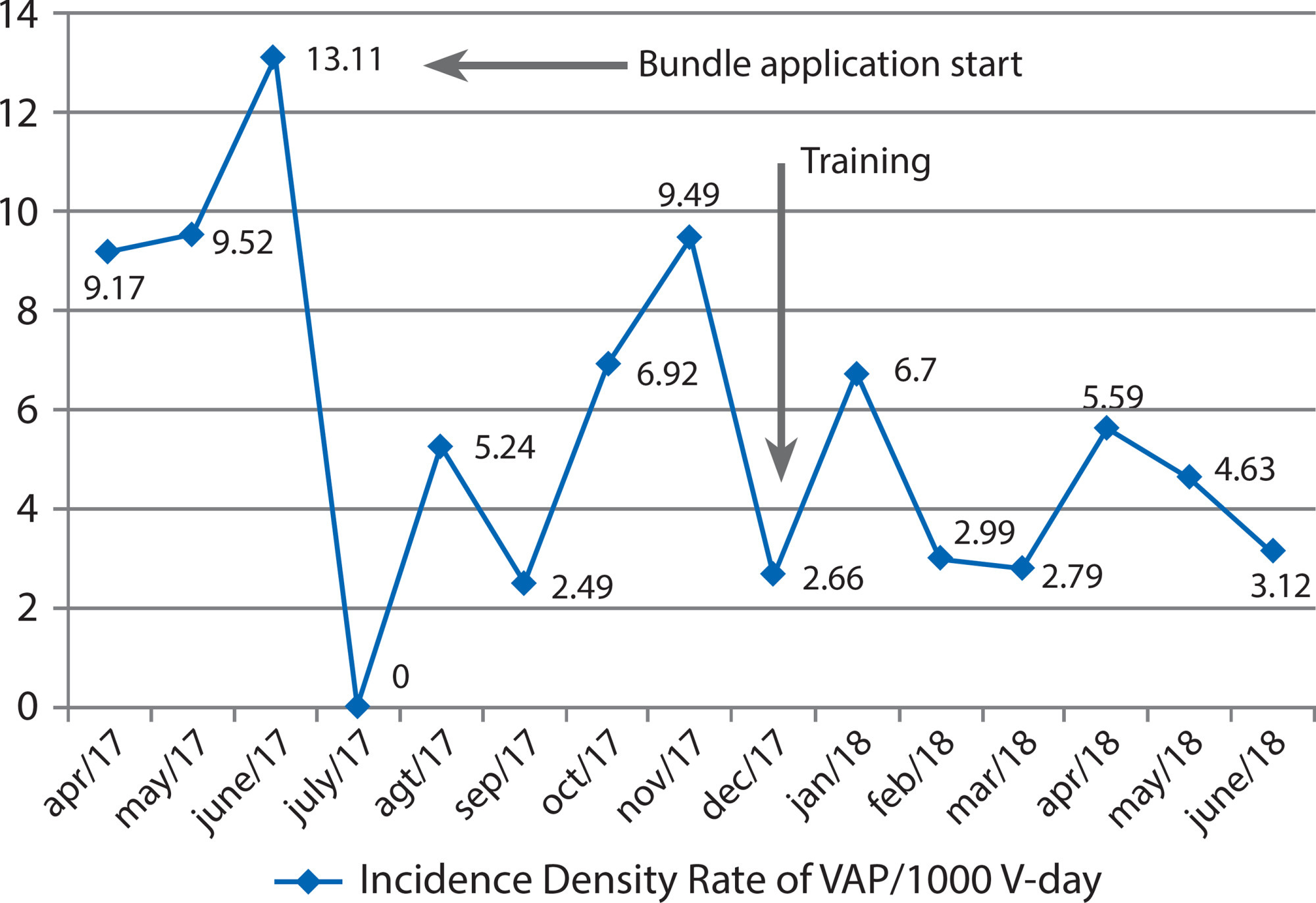
-
08-19-2019
Degree in Nursing: education through problem-based learning
Revista Brasileira de Enfermagem. 2019;72(4):1071-1077
Abstract
Degree in Nursing: education through problem-based learning
Revista Brasileira de Enfermagem. 2019;72(4):1071-1077
DOI 10.1590/0034-7167-2018-0298
Views0See moreABSTRACT
Objective:
To describe how undergraduate courses in Nursing are using the problem-based learning (PBL).
Method:
Integrative literature review, from searches in the databases Education Resources Information Center (ERIC), Latin American and Caribbean Health Sciences Literature (Lilacs), and PubMed, from 2010 to 2015. 36 articles were analyzed.
Results:
A teaching method used in all continents, the PBL enables improvement of the critical thinking, autonomy, motivation for learning, active search attitude, ability to work in teams, and problem-solving. Difficulties and challenges relate to the training of students and teachers to understand the principles of the method.
Final considerations:
The benefits of PBL coincide with the needs of nursing training, but its applicability demands constant review in seeking to develop the skills necessary for this training.
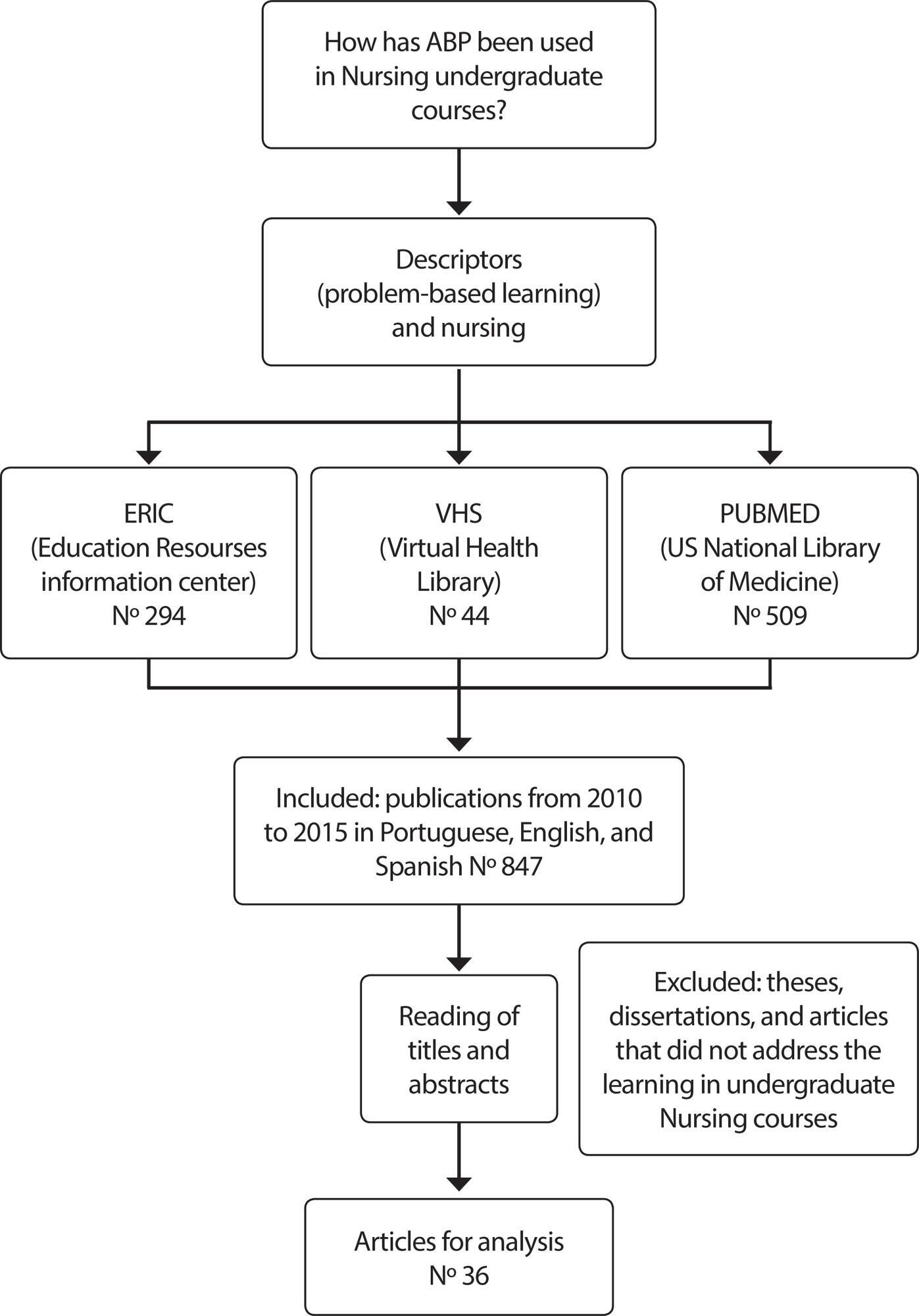
-
ORIGINAL ARTICLE12-13-2019
Mobile health technology for gestational care: evaluation of the GestAção’s app
Revista Brasileira de Enfermagem. 2019;72:266-273
Abstract
ORIGINAL ARTICLEMobile health technology for gestational care: evaluation of the GestAção’s app
Revista Brasileira de Enfermagem. 2019;72:266-273
DOI 10.1590/0034-7167-2018-0641
Views0See moreABSTRACT
Objective:
to evaluate the GestAção application, based on the experience of pregnant women use.
Method:
an evaluative, applied, methodological, quantitative-qualitative study. This tool was evaluated by 13 pregnant women through questionnaires for sociodemographic profile characterization and Likert scale use to calculate Content Validity Index (CVI); and semi-structured interview, with analysis based on Semiotics.
Results:
the study evidenced a significant level of satisfaction of pregnant women with the application use, considering the objectives (CVI = 0.92), structure and presentation (CVI = 0.86), and relevance (CVI = 0.92).
Final considerations:
the GestAção application obtained an overall CVI of 0.90, evidencing it as a facilitating and supporting technology in the empowerment of pregnant women interested in obtaining knowledge about pregnancy. It has been proved to be a powerful tool to qualify good practices in nursing consultation.
-
REFLECTION06-29-2020
Children’s (in)visibility in social vulnerability and the impact of the novel coronavirus (COVID-19)
Revista Brasileira de Enfermagem. 2020;73:e20200302
Abstract
REFLECTIONChildren’s (in)visibility in social vulnerability and the impact of the novel coronavirus (COVID-19)
Revista Brasileira de Enfermagem. 2020;73:e20200302
DOI 10.1590/0034-7167-2020-0302
Views0See moreABSTRACT
Objective:
To examine the impact of the infection by the novel coronavirus on Brazilian children in situation of social vulnerability based on the Millennium Sustainable Development Goals.
Method:
Reflective study based on discursive formulation in three aspects: principles of the objectives and goals for the millennium sustainable development; impact of the pandemic on the health of children and their families living in social vulnerability; and the role of pediatric nursing in the care provided – limits and challenges.
Results:
In January 2020, the news of COVID 19 is released as a pandemic. In Brazil, children and families are still without access to basic rights, thereby increasing their risks of social vulnerability because of the quarantine. The nursing field has an important role in monitoring children and their families, offering guidance in search for solutions and preventing contamination.
Conclusion:
There are still challenges to be overcome by the children and their families in situations of vulnerability against COVID-19.
-
ORIGINAL ARTICLE07-10-2020
Profile of nursing students: quality of life, sleep and eating habits
Revista Brasileira de Enfermagem. 2020;73:e20190365
Abstract
ORIGINAL ARTICLEProfile of nursing students: quality of life, sleep and eating habits
Revista Brasileira de Enfermagem. 2020;73:e20190365
DOI 10.1590/0034-7167-2019-0365
Views0See moreABSTRACT
Objective:
to profile and analyze sleep quality, quality of life and eating habits of nursing students.
Methods:
a cross-sectional, comparative and correlational study with the following variables: sociodemographic characteristics, Pittsburgh sleep quality index, quality of life and eating habits. One hundred ninety-five students participated in the study.
Results:
participants were on average 24 years old. Results showed that females were prevalent (87.1%); 71.0% of the students had poor sleep quality; 98.9% used electronic devices before bedtime. Self-perception of quality of life was indifferent (38.3%), and self-perception of general health, 36.9% expressed satisfaction. Among the participants, 45.13% consumed one portion of fruit and 40.66% two to three portions of vegetables daily.
Conclusion:
the study allowed the profile of these students, sedentary, overweight and poor sleep quality young students who studied and worked.
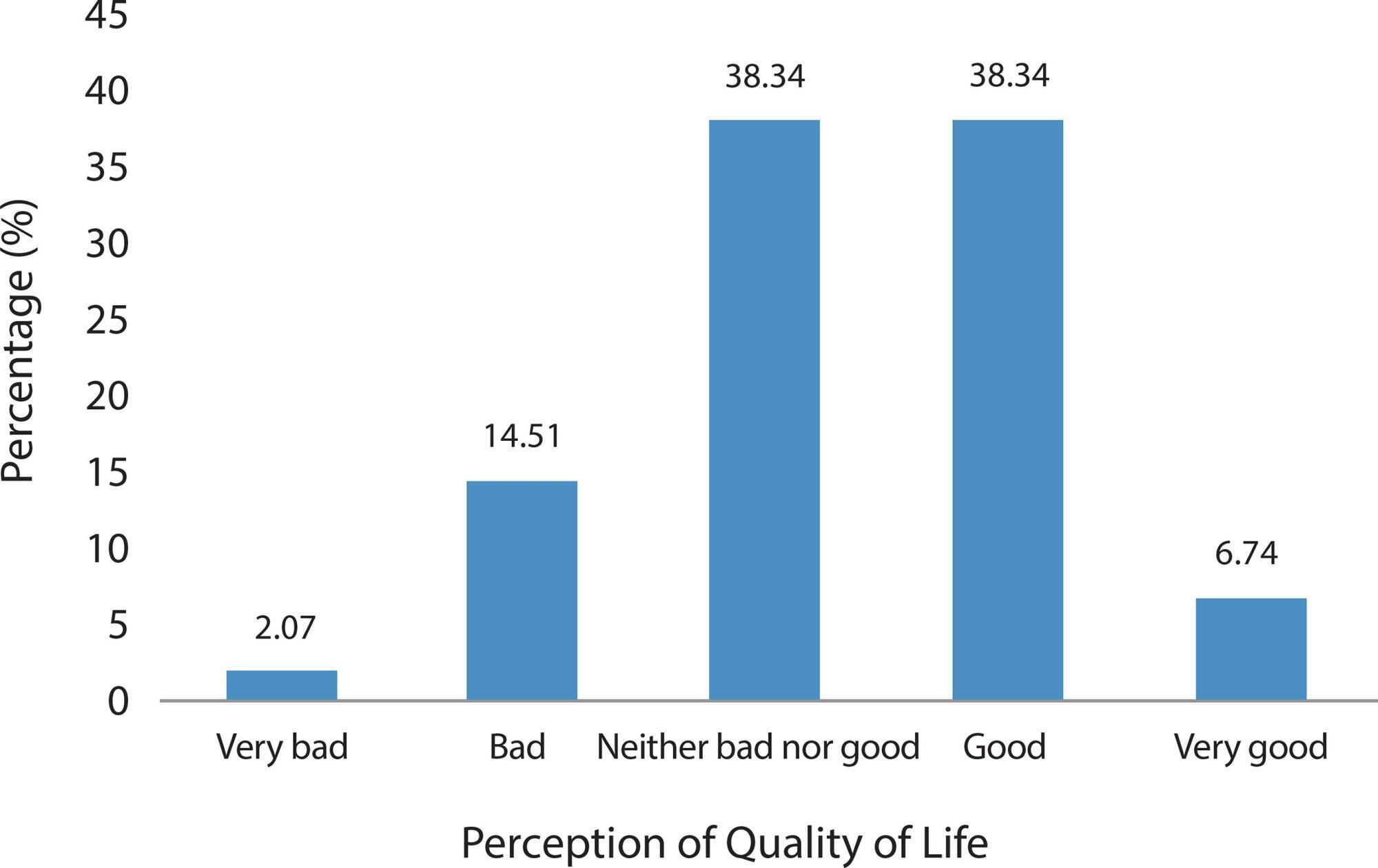
-
ORIGINAL ARTICLE06-09-2020
Stress of nursing professionals working in pre-hospital care
Revista Brasileira de Enfermagem. 2020;73(2):e20180660
Abstract
ORIGINAL ARTICLEStress of nursing professionals working in pre-hospital care
Revista Brasileira de Enfermagem. 2020;73(2):e20180660
DOI 10.1590/0034-7167-2018-0660
Views0See moreABSTRACT
Objectives:
To analyze the factors related to the occupational stress of a Mobile Emergency Care Service (Samu) nursing team.
Methods:
This is a descriptive study, with a quantitative approach, performed with nursing professionals from Samu service of a city of Pernambuco. A sociodemographic questionnaire and the Lipp’s Stress Symptom Inventory were used.
Results:
The participants presenting stress (24.6%) were classified in the phases: resistance (19.7%), exhaustion (4.4%) and near exhaustion (0.5%). It was also observed an association of stress level with the following factors: gender, sleep quality, professional autonomy restriction, emotional exhaustion with work performed and work in inadequate or unhealthy physical facilities.
Conclusions:
Although showing low occurrence of stress, this study pointed out the profile that presents the highest risk of developing occupational stress, through the factors significantly associated with stress in the studied population.
-
ORIGINAL ARTICLE07-10-2020
Nursing appeals on social media in times of coronavirus
Revista Brasileira de Enfermagem. 2020;73:e20200225
Abstract
ORIGINAL ARTICLENursing appeals on social media in times of coronavirus
Revista Brasileira de Enfermagem. 2020;73:e20200225
DOI 10.1590/0034-7167-2020-0225
Views0See moreABSTRACT
Objective:
to know and analyze the nursing appeals on social media during the COVID-19 pandemic.
Method:
it is a documentary, qualitative, descriptive, and exploratory research with data collected in publications in two social media. Two hundred ninety-five publications of nursing professionals published on Twitter and Instagram between March 11 and 20, 2020 were submitted to content analysis using ATLAS.ti resources.
Results:
four thematic categories emerged: #stayathome, #whereismyPPE, #nowweareheroes, #nothingnewinthefrontline, according to frequency of communications. The appeals show a relationship with the social relevance of nursing professional work and with the conditions required for its exercise.
Final considerations:
old and new challenges of the profession were placed on the agenda in social media, especially related to the workforce and instruments of labor. These speeches can serve as a foundation for policies to improve working conditions and promote appreciation of the profession.

Search
Search in:
Nuvem de Tags
Adolescente (85) Atenção Primária à Saúde (239) COVID-19 (91) Criança (91) Cuidados de Enfermagem (269) Educação em Enfermagem (151) Educação em Saúde (139) Enfermagem (930) Enfermagem Pediátrica (86) Estudantes de Enfermagem (77) Estudos de Validação (131) Família (87) Idoso (208) Promoção da Saúde (99) Qualidade de Vida (104) Saúde do Trabalhador (86) Saúde Mental (145) Saúde Pública (82) Segurança do Paciente (150) Tecnologia Educacional (100)



